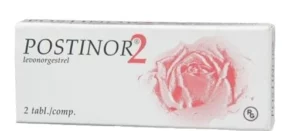Here is a carefully selected list of 25 Drugs for every woman
Disclaimer: The drugs listed here have been researched by the editors and qualified health professionals, however it does not supersede the advice of your personal physician, every drug has side effect and so are the drugs listed here. We are not liable for any untoward effect.
PAIN MANAGEMENT MEDICATIONS
1. PARACETAMOL
This is an analgesic agent (pain reliever), and antipyretic (can reduce your body temperature)
Names at the pharmacy (Panadol, Tylenol, Wellpar)
Common Uses;
- Mild Menstrual Pain
- Headache
- Fever
Typically, 2 tablets (1 gm) are taken in the morning, afternoon, and evening.
2. PIROXICAM
This is a non-steroidal anti-inflammatory agent and an analgesic (pain reliever).
Names at the pharmacy (Piroxicam)
Common Uses;
- Menstrual pain
Commonly dosed as 20 mg daily (must be taken after food).
Other pain relievers in this group include Ibuprofen, diclofenac, aceclofenac, e.t.c.
3. TRAMADOL
This is a synthetic opioid pain reliever for moderate to severe pain.
This drug should not be taken for fun, or for other unapproved reasons, and therefore must be taken under your doctor’s prescription.
Names at the pharmacy (Tramcare, tramadol, Tramapride)
EMERGENCY CONTRACEPTIVE PILLS
1. PROSTINOR 2
This is a contraceptive agent used for the emergency prevention of unwanted pregnancy following unprotected sex or a condom not correctly used or ruptured.
There are usually two tablets, and each contains 750 micrograms of levonorgestrel to be taken 12 hours apart, or both at once.

This drug is most effective when taken after unprotected sex, and least effective if taken three days or more later.
Names at the pharmacy (Prostinor 2)
Common Use;
- Emergency prevention of pregnancy
2. ULIPRISTAL ACETATE
This is a contraceptive agent used for the emergency prevention of unwanted pregnancy following unprotected sex or unprotected sex.
A single dose of 30 mg of ulipristal acetate, administered within the next 72 hours, is the standard.
Names at the pharmacy (ellaOne)
Common Use;
- Emergency prevention of pregnancy
- Also used in symptomatic fibroid (consult your doctor about this).
ANTI-ULCER MEDICATIONS
1. OMEPRAZOLE AND RABEPRAZOLE
These are anti-ulcer drugs, for the relief of stomach pain from ulcers.(symptomatic relief)
Names at the pharmacy (Omeprazole, pepzol, Azgovanc, Rabeprazole)
common use;
- For symptomatic relief of ulcer-caused stomach pain
- In combination with other drugs, it is also used in the treatment of peptic ulcer disease.
Commonly dosed at 20 mg daily or 20 mg twice daily.
It is part of the standard triple regimen for the treatment of peptic ulcer disease; others include amoxicillin and clarithromycin for 7–14 days.
2. GESTID
This is a hydroxide, also used in the symptomatic relief of ulcer pain.(symptomatic relief)
Names at the pharmacy (Gestid)
common use;
- for symptomatic relief of ulcer pain.
- In combination with other drugs, it is also used in the treatment of peptic ulcer disease.
It is available as a syrup and should be taken in doses of 10ml twice daily.
Note: Medical Treatment of Peptic ulcer disease is done using the Triple Regimen and you should see your personal doctor for further directional
ANTI-MALARIA DRUGS
This drug is used for the treatment of uncomplicated falciparium malaria and is commonly taken for three days.
The current mainstay of malaria treatment is ACTs, i.e., artemisinin-based combination therapy.
They include: dihydroartemisinin-piperaquine, artemether-lumefantrine, artesunate-amodiaquine, artesunate–mefloquin, and artesunate–sulfadoxine–pyrimethamine.
Names at the pharmacy (Waipa, Clartem, Amartem, Laris, Lonart, P-alaxin, Coartem)
ANTI-ALLERGY MEDICATIONS
1. LORATADINE
This is an antihistamine drug used for the relief of allergies.
Names at the pharmacy (Loratin, loratadine)
Common presentations of allergies include:
- Catarrh
- Body itching
- Throat itch
- Eye itch
Depending on the severity, 10 mg daily or twice daily is commonly prescribed.
2. CHLORPHENIRAMINE
This is a potent anti-histamine drug, which can cause dizziness and sleepiness, and should not be taken while driving or doing other activities that require attentiveness.
Names at the pharmacy (Paraxin, Ranphenicol, chlorwell )
common use;
- Catarrh
- Body itching
- Throat itch
- Allergic cough
MEDICATION FOR ACNE AND MINOR SKIN INFECTIONS:
1. TETRACYCLINE AND DOXYCYCLINE:
These are excellent first-line drugs used in the treatment of inflammatory acne and other bacterial-induced skin inflammatory conditions. They are bacteriostatic in action.
2. MACROLIDES, E.G., AZITHROMYCIN, CLARITHROMYCIN, AND ERYTHROMYCIN.
They are used as second-line or as substitutes for tetracyclines in the treatment of acne. It leads to tooth discoloration in children and has been documented to be teratogenic in pregnancy.
3. RETINOIDS:
These are vitamin A-based drugs and are usually used in the treatment of moderate to severe acne.
They act by accelerating cellular regeneration and shedding aged and damaged skin layers, which is also important in eradicating hyperpigmentation and scar tissues.
However, they are not safe for use in pregnant women because they can cause neural tube defects in the fetus. Examples are Tretinoin and Isotretinoin.
3. BENZOYL PEROXIDE AND SALICYLIC ACID CREAMS.
Both have anti-inflammatory and antibacterial effects.
MEDICATIONS FOR COMMON STIs (sexually transmitted infections)
1. ACYCLOVIR, FAMCYCLOVIR, AND VALACYCLOVIR:
These are antiviral medications used to control flares of genital and oral herpes infections. They don’t offer a definitive cure, but do give symptomatic relief and shorten the active phases of the infection.
The benefits include reducing the tendency to infect a partner and improving the overall quality of life.
2. PENICILLINS:
They are first-line drugs in the treatment of syphilis at whatever stage. But, it is important to see the doctor when signs of advanced disease are observed. It could be taken orally or through the parenteral route (intramuscular and intravenous).
3. CEFTRIAXONE + AZITHROMYCIN:
Although women are usually asymptomatic in the early stages of gonorrhea infection, they can still pass on the disease to their respective partners, with whom they have unprotected sexual intercourse.
That is usually the manner in which most cases of gonorrhea are detected in women. If left untreated, it can lead to pelvic inflammatory diseases, tubal blockage, and possible infertility.
The duo of Ceftriaxone and Azithromycin is the gold standard of treatment.
VAGINAL TRACT INFECTION
1. AZOLES (ketoconazole, fluconazole, e.t.c.)
They are used in treating vaginal candidiasis and systemic fungal infections.
2. METRONIDAZOLE
An anaerobic specific antibiotic, commonly marketed under the trade name “Flagyl”. It is used in the treatment of bacterial vaginosis.
URINARY TRACT INFECTIONS
1. NITROFURANTOIN
It is an antibiotic and urinary antiseptic, commonly and effectively used in the treatment of UTIs. The major side effect limiting its use is severe nausea.
2. VITAMIN C
Used to acidify the urine during the treatment of UTIs.
3. BACTRIM (trimethoprim/sulfamethoxazole)
This is an antifolate medication used in a plethora of medical treatments, including UTIs. Other applications include skin infections caused by methicillin-resistant staph. aureus (MRSA), traveler’s diarrhea, cholera, and a host of prophylaxis in PLWHA (People living with HIV/AIDS
COMMON ANTIBIOTICS AND THEIR USES
1. CIPROFLOXACIN
This is a broad-spectrum antibiotic, commonly used in the treatment of infections.
Common use;
- Urinary tract infection (UTI)
- Typhoid fever
500 mg twice daily for one week is a common dose.
2. AMOXICILLIN, AMPICILLIN
These are broad-spectrum antibiotics used to treat a variety of skin, chest, and other systemic bacterial infections.
Due to growing concerns about resistance, they are commonly found nowadays in combinations, for example, amoxicillin-clavulanic acid and ampicillin-cloxacillin combinations.
Common adult doses are 500 mg twice daily, but children and under-15 age-groups are given 25 mg/kg/day in two divided doses.




